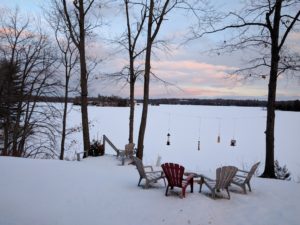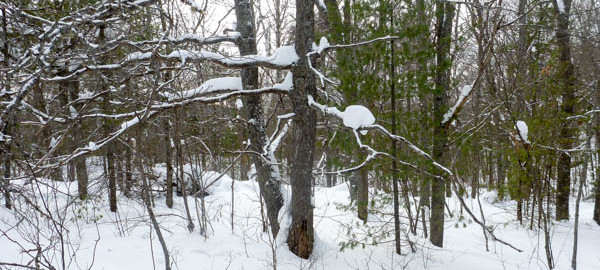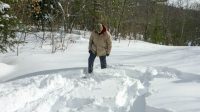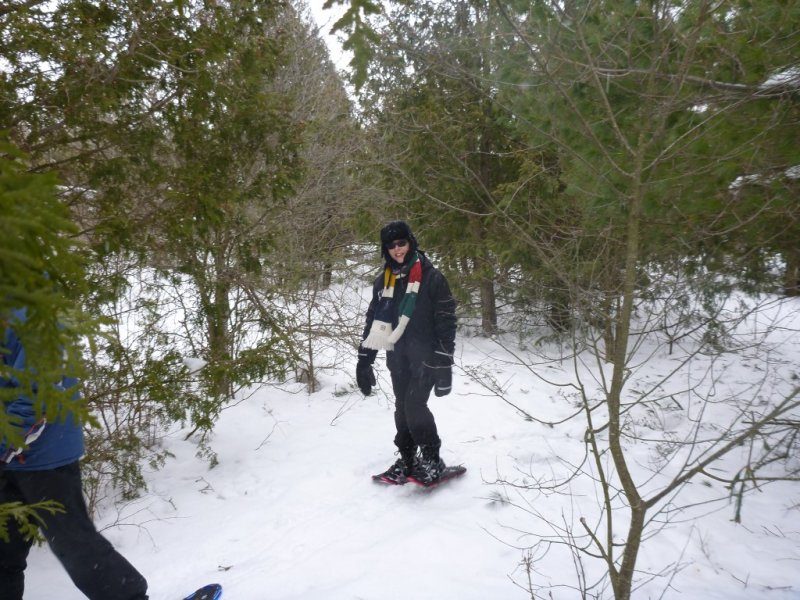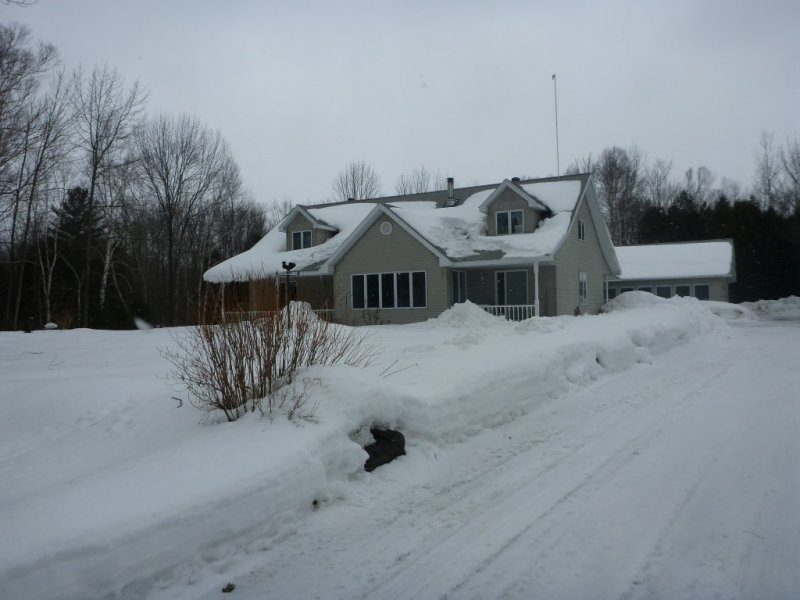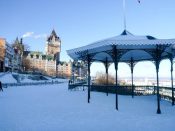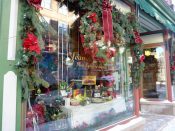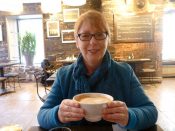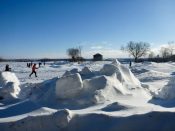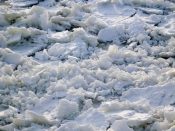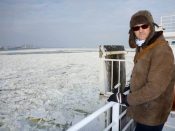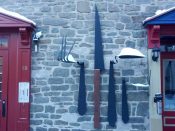I’ve always been fascinated by the stories of lives otherwise unseen that winter reveals. So it was a real treat, on Saturday March 5, to join Shirley French at her property on Cranberry Lake as she led a session for DCLA (Dog & Cranberry Lakes Association) members on Tracks in the Snow.
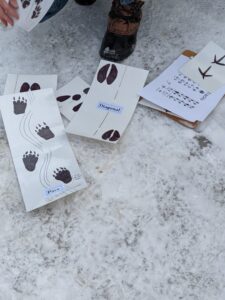
I think someone must have had what my grandfather used to call ‘a hotline to the clerk of the weather’! Certainly, we were blessed with an almost perfect day – snow fresh enough for distinct tracks, cold but not too cold, dry, and reasonably bright.
A group of a dozen or so intrepid trackers, including two delightful young girls bursting with enthusiasm and curiosity, gathered on Shirley’s land for an initial briefing on what we might find. Helpful illustrations of the tracks we were likely to see supplemented what we had already gleaned from a video of winter visitors that Shirley made available before the event.
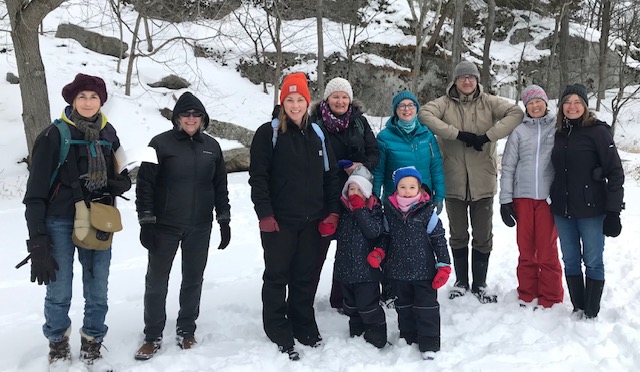
A story of a fox, a weasel, and a snake (and other animals)
Unsurprisingly, the first tracks we spotted were those of the ubiquitous white-tailed deer, as well as squirrel and rabbit.
However, there was real excitement when we spotted some intriguing tracks leading up over a rock. Of course, we had to investigate! Skirting carefully up the slope behind the rock we discovered the partially eaten remains of a snake, likely a water snake. Who dragged it there? At the time, we didn’t arrive at a clear answer. But later Shirley went back and measured the footprints on the rock. The narrative that emerged was that it was a fox who left the snake’s remains. The fox likely stole the prey from a weasel, an animal that could access a snake hibernaculum, perhaps in the side of a small island just offshore across the ice.


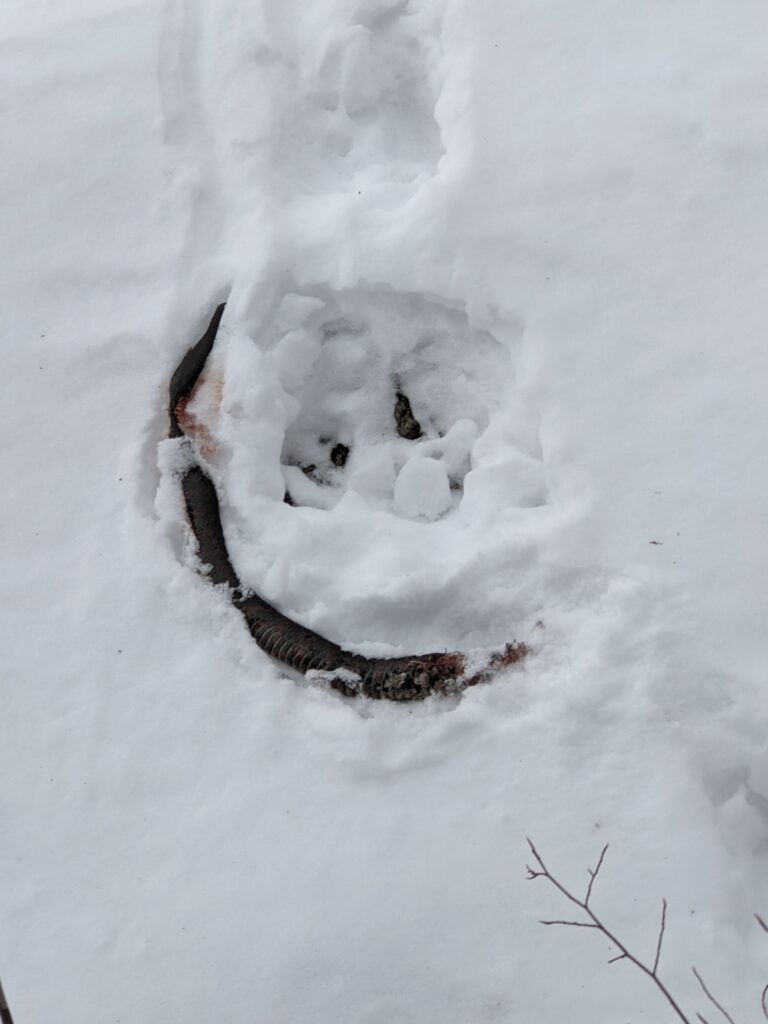
The ongoing story, as captured by video footage in the days that followed, included visits to the snake by a leery crow and a nibbling racoon; fox and porcupine also passed by.
It’s worth noting that this rock was already of interest as Shirley had previously identified a mink den beneath it, sharing some lovely footage of their comings and goings in her preliminary video.
Further explorations
We continued our explorations, edging out towards the lake and clambering up rocky paths, all the while noting the evidence of abundant life written in the snow. The distinctive tracks of porcupine often include the sweep of their dragging tail alongside their clawed toes – four at the front, five at the back. Turkey tracks are like direction markers, though they point back in the direction they’ve come from rather than forward to where they are going! We saw both of these.



It was truly exhilarating to forge a path through the snow to one of the highest points above Cranberry lake. What a view!

Many thanks to Shirley for her leadership, the sharing of her knowledge and the invitation to walk her land and to all the participants, especially the youngest ones, who helped make this a captivating and magical experience.
Written for and published in the Dog & Cranberry Lakes Association Newsletter, June 2022
Last year for the DCLA Newsletter I wrote about my attempts at getting to know our trees in The Year of the Trees






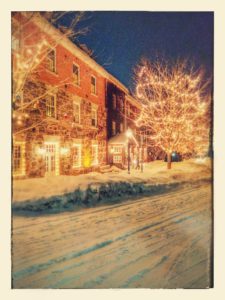 Our destination was
Our destination was 














